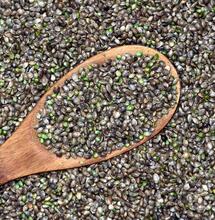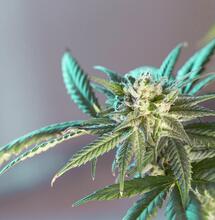Global Drug Survey 2014

The latest Global Drug Survey showed several surprising trends, one of which being the increasing popularity of purchasing drugs online.
The latest Global Drug Survey showed several surprising trends, one of which being the increasing popularity of purchasing drugs online.
|
A summary of the top twenty drugs used by respondents over the past twelve months |
The Global Drug Survey 2014 Results
The 2014 Global Drug Survey was conducted during November and December of 2013 and released on April 14th, 2014 by the GDS independent research organization, comprised of "experts from academia and healthcare."
Promoted via media partners in seventeen nations across the globe, the study received nearly 80,000 responses and was published in eight languages. Just some of the countries with participating residents include the Netherlands, United States, Mexico, Brazil, Republic of Ireland, Scotland, Wales, England, Germany, France, Denmark, Belgium, Switzerland, Portugal, Spain, Hungary, Slovenia, New Zealand and Australia.
Cannabis, alcohol and tobacco generally maintained their position as the most widely-used drugs across the world, while cocaine, various types of methamphetamine and MDMA followed just behind. However, an increasing variation of the usage of other types of drugs showed marked differences with regards to each particular sample nation.
One growing trend appears to be nicotine ingestion in forms considered to be non-traditional per region, such as e-cigarettes, powdered snuff and shishas or hookahs.
|
“The Net Pleasure Index is the first-ever attempt to define and rank drugs in terms of the overall balance of pleasures and harms,” according to the GDS website |
Perhaps unsurprisingly, the consumption of caffeine-based products, such as caffeine pills and energy drinks, appears to be rapidly accelerating across the globe.
Psychoactive pharmaceuticals, namely opioid painkillers or benzodiazepines, appear to be quite problematic in countries like the United States and New Zealand - whether prescribed or not. However, non-prescribed pharmaceuticals such as ketamine, gamma-hydroxybutyric acid or GHB
and methylphenidate (commonly known by brand names like Ritalin or Concerta) seem to have limited, local presences in party scenes in certain countries - albeit with often discomforting prevalence.
Another category showing geographical dissonance was the use of "research chemicals and legal highs," such as synthetic Cannabis, which appears to be used more frequently in the United States than in any other country surveyed. Germany and Switzerland scored just below American users, which potentially indicates an earlier adoption of such drugs by these three nations; next year's survey may reflect the slow spread of such drugs across the planet.
Drug prices were also investigated, with cocaine once again ranking as not only the most expensive drug but also the least impressive value-for-money. Cannabis averaged twelve euros (about $16.50) per gram, although prices varied widely, even across single continents, such as Europe. Spain's Cannabis market revealed a mean price of six euros (around $8.20) per gram, while smokers in Ireland are forced to pay about twenty euros (roughly $27.50) or more per gram.
Survey questions relating to alcohol revealed that this drug maintains its spot as the number-one cause of seeking emergency room treatment, creating concern among friends and lack of awareness of national consumption guidelines. In addition, alcohol remains the source of a "huge level of normative mis-perception" among the heaviest consumers, meaning that those who imbibe the most tend to misconceive their actual levels of over-indulgence.
|
This chart shows how many people bought drugs on the Internet in countries with between 600 and 1,500 respondents |
Origins of the Global Drug Survey
Started in 1999 by consultant psychiatrist, addiction medicine specialist and researcher Dr. Adam Winstock, his school-era friend 'Judge' Jules and Tom Whitwell, the then-features editor at Mixmag, the debut edition of the Mixmag Annual Drug Survey began as a two-page questionnaire that was filled out by readers and mailed back to the magazine. Results were published the following year in the February issue, titled Britain's Biggest-Ever Drug Survey, where readers could absorb sixteen full pages of survey results, graphics and harm-reduction advice.
After fastidiously following drug trends and reporting everything they could find to the public, the Mixmag survey took a four-year hiatus. In 2009, the survey went online, continuing the all-things-drugs approach with fervor and transparency. After a distinct shift from mainly club kids as participants to responses from the general public, today, the Global Drug Survey is the largest of its kind.
|
The amount of people who bought drugs on the Internet in countries with more than 1,500 respondents |
This research organization offers an independent survey free from government intervention or pressure by funding groups, which serves a unique purpose in "complementing other existing sources of drug use data across the world." The motivation behind the project is to act as a bridge between drug users and government/public health organizations, allowing society "to benefit from the published results whilst allowing professional groups the ability to provide support, information, education and health services based upon geographical evidence data."
Just some of the media partners involved include The Huffington Post (US), Mixmag (England), The Guardian (England/Wales), Público (Spain), Studio Brussel (Belgium), The Herald (Scotland), Neon (Hungary), Spuiten en Slikken (the Netherlands) and Libération (France).
The Global Drug Survey website offers findings, download-able PDFs, graphics and YouTube videos. For more information, check out the GDS website or bespoke YouTube channel.
If you would like to participate in next year's survey, visit www.globaldrugsurvey.com/GDS2015 around mid-November of 2014. The organization's new target is to attract at least 120,000 respondents in order to collate an even more accurate database of global drug use, opinions and experiences.
Cannabis: Highlights from the Global Drug Survey 2014 on YouTube:



